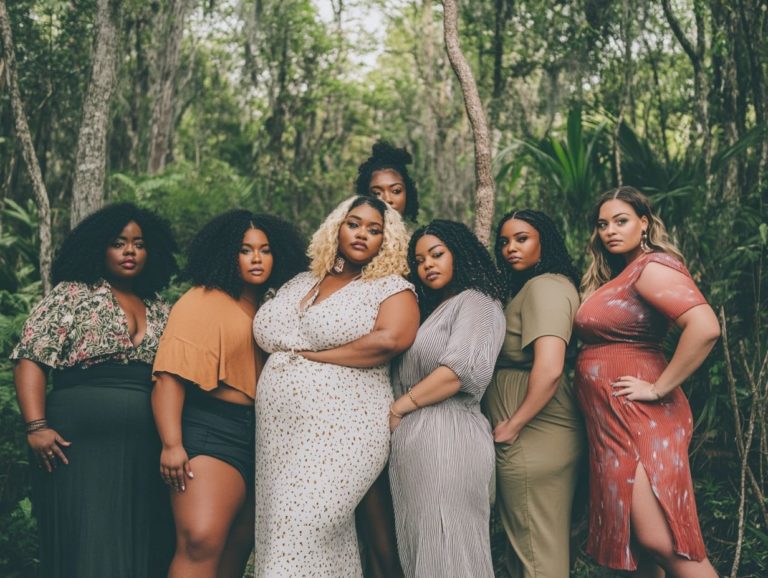5 Stylish Ways to Wear Sustainable Fabrics
In a world progressively embracing sustainability, the fashion industry is making noteworthy strides towards a greener future. Get ready to dive into the exciting world of sustainable fashion!
This article highlights the importance of sustainable fashion and offers actionable ways to curate an eco-friendly wardrobe. You ll discover an array of sustainable fabrics, like organic cotton and hemp, along with expert tips on seamlessly integrating them into your style for any occasion.
Elevate your fashion sense while contributing positively to the planet!
Contents
- Key Takeaways:
- 1. Sustainable Fashion: What Is It and Why Is It Important?
- 2. Incorporating Sustainable Fabrics into Your Wardrobe
- 3. Choose Organic Cotton
- 4. 2. Opt for Linen
- 5. 3. Try Out Bamboo Fabric
- 6. 4. Go for Recycled Polyester
- 7. 5. Experiment with Hemp
- 8. How to Style Sustainable Fabrics in Different Outfits
- Frequently Asked Questions
- 1. What are some stylish ways to wear sustainable fabrics?
- 2. How can I make my wardrobe more sustainable?
- 3. Can I still be fashionable while wearing sustainable fabrics?
- 4. What are some examples of sustainable fabrics?
- 5. How can I style sustainable fabrics for special occasions?
- 6. Are there any benefits to wearing sustainable fabrics?
- 7. Is sustainable fashion more expensive?
Key Takeaways:
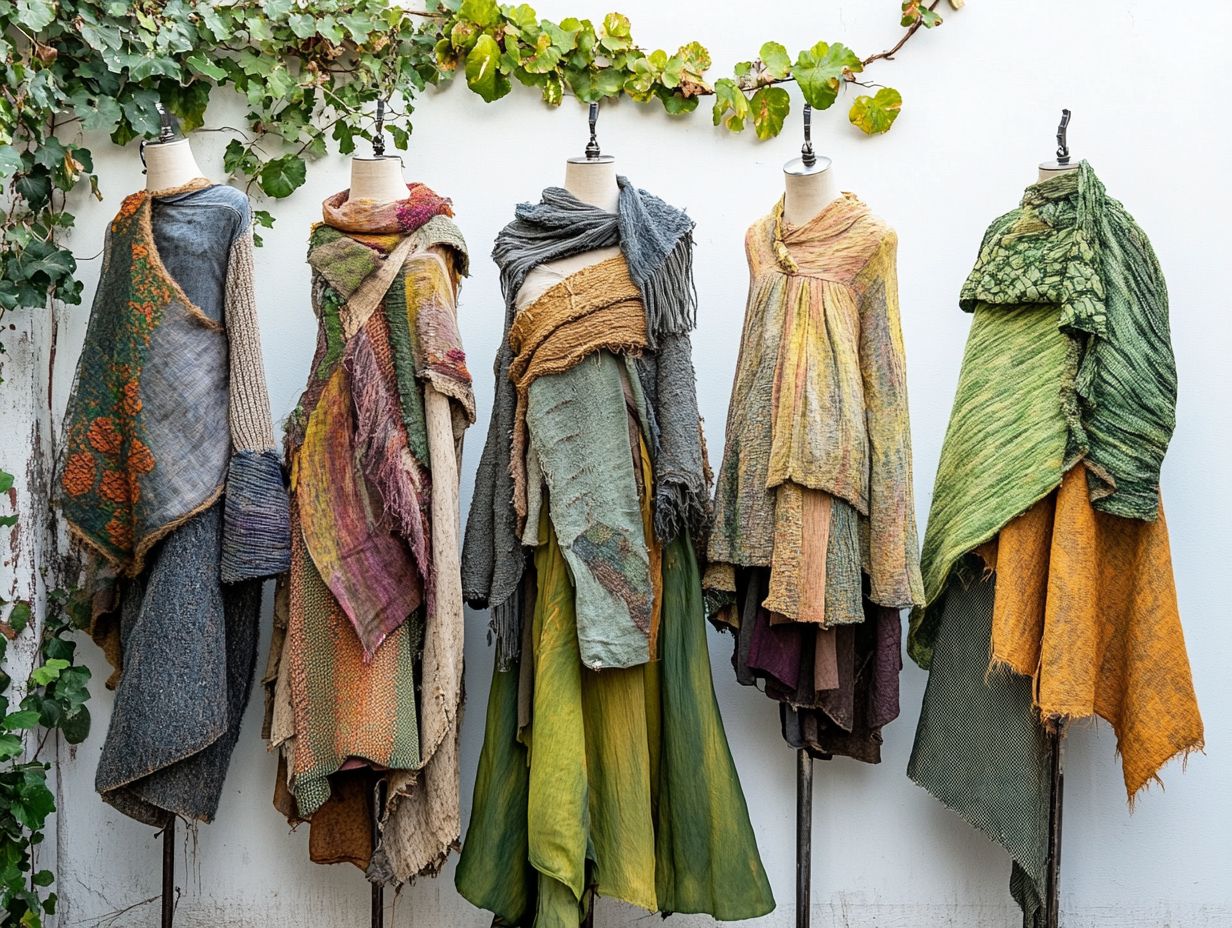
- Choose organic cotton, linen, bamboo, recycled polyester, or hemp for sustainable fashion.
- Incorporate sustainable fabrics into your wardrobe to reduce environmental impact and promote ethical practices.
- Experiment with different styles and outfits using sustainable fabrics for both formal and casual occasions.
1. Sustainable Fashion: What Is It and Why Is It Important?
Sustainable fashion represents a transformative approach that places eco-friendly clothing practices and thoughtful shopping at the forefront. By embracing this movement, you can significantly reduce the carbon footprint linked to clothing production and consumption.
This paradigm shift is essential, especially given that the fashion industry contributes over 10% of global carbon emissions and generates nearly 92 million tons of textile waste every year. Sustainable fashion not only addresses environmental degradation but also champions social equity in labor practices.
Good On You leads the way, providing transparency ratings to empower you in making informed choices. Meanwhile, the Sustainable Apparel Coalition encourages companies to adopt strategies that minimize their ecological impact.
Together, these initiatives pave the way for a more ethical and responsible fashion landscape, prompting you to rethink your purchasing habits for the sake of the planet s future.
2. Incorporating Sustainable Fabrics into Your Wardrobe
Incorporating sustainable fabrics like organic cotton, bamboo, and hemp into your wardrobe champions eco-friendly practices while elevating the quality and durability of your clothing. These materials are cultivated with methods that minimize environmental impact, such as reducing chemical usage and conserving water.
For example, organic cotton is grown without harmful pesticides, resulting in healthier soil and safer practices for farmers. Bamboo thrives on minimal resources while helping to prevent soil erosion, and hemp is impressively resilient, naturally repelling pests.
To ensure these eco-friendly options stand the test of time, follow simple clothing maintenance tips like washing in cold water and line-drying to preserve their integrity and cut down on energy consumption.
By choosing sustainable fabrics, you can significantly lower your carbon footprint and leave a positive mark on the planet.
3. Choose Organic Cotton
Choosing organic cotton is a remarkable way to embrace sustainable fabrics. It s cultivated without harmful chemicals, making it a safer choice for both the environment and your skin.
By opting for organic cotton, you re not just making a fashion statement; you re supporting healthier farming practices and contributing to reducing the carbon footprint linked to textile production. Unlike conventional cotton, which often relies on toxic pesticides and fertilizers, organic methods promote biodiversity and enhance soil health.
Many clothing brands are weaving organic cotton into their collections, offering versatile pieces that resonate with eco-conscious shoppers like you. These brands prioritize transparency in their sourcing practices, allowing you to see how your apparel choices help pave the way for a more sustainable future.
Join the movement for a greener planet today! Make conscious choices that benefit both your wardrobe and the environment.
4. 2. Opt for Linen
Choosing linen, a sustainable fabric from the flax plant, brings numerous benefits. Its natural pest resistance and low water needs make it ideal for eco-conscious individuals like you.
Linen is not only environmentally friendly; it also offers incredible durability, standing strong against the wear and tear common in synthetic fibers. By choosing linen garments, you re making a statement about your wardrobe and your commitment to reducing fashion waste.
To ensure these exquisite pieces last, proper care is essential. Wash linen in cold water, air dry instead of using the dryer, and iron while slightly damp to keep your garments looking fresh and vibrant for years.
By cultivating these habits, linen can truly become a cornerstone of your sustainable wardrobe.
5. 3. Try Out Bamboo Fabric
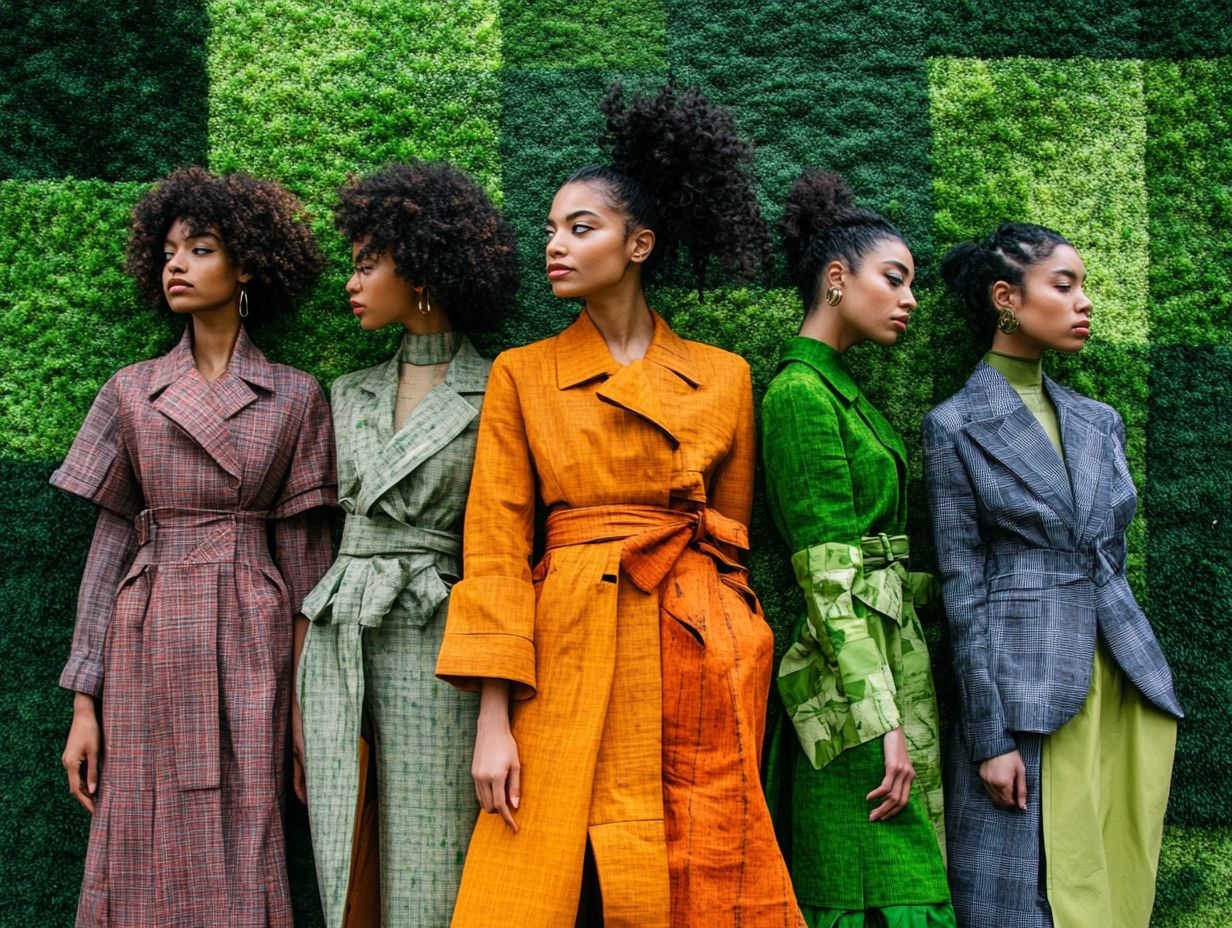
Bamboo fabric is a sustainable choice that combines comfort with eco-friendliness. It s soft and breathable, perfect for elevating your wardrobe while caring for the planet.
The journey begins with the hand-harvesting of bamboo stalks to ensure sustainability. These stalks break down naturally through methods such as mechanical processing or chemical breakdown. This adaptable material can be spun into yarn and woven into soft fabrics that feel gentle against the skin while also being durable.
For the environmentally conscious consumer, the benefits extend beyond comfort. Bamboo cultivation uses minimal water and pesticides, significantly reducing textile waste compared to traditional cotton.
Brands like Boody and Tencel are leading this movement, offering stylish, eco-friendly apparel that meets the growing demand for sustainable fashion.
6. 4. Go for Recycled Polyester
Recycled polyester is changing the landscape of sustainable fashion as a resourceful alternative made from post-consumer plastic bottles. This fabric offers a practical solution to the issue of textile waste caused by fast fashion while providing high-performance clothing.
This innovative fabric reduces the need for virgin polyester sourced from petroleum and helps divert plastic waste from landfills and oceans. A growing number of environmentally-conscious brands, like Patagonia and Everlane, are incorporating recycled polyester into their collections, showing their commitment to sustainability without sacrificing quality or style.
You can make a real difference by choosing to support these brands. Your purchasing decisions can encourage more companies to adopt eco-friendly practices. By being selective about what you buy, you actively contribute to a more sustainable fashion industry and champion recycling initiatives that benefit our planet.
7. 5. Experiment with Hemp
Trying hemp as a sustainable fabric choice offers remarkable benefits, such as high durability and a low environmental impact. This makes it a popular option among eco-conscious fashion enthusiasts like you.
This versatile plant grows quickly, requiring little water and no pesticides, significantly reducing its ecological footprint compared to conventional materials. Its fibers are robust and biodegradable, contributing to a cleaner planet.
When you wear hemp clothing, you ll notice its natural texture adds a unique flair to a variety of outfits, from casual to chic. With proper care, hemp garments can last for years, allowing you to enjoy both style and a commitment to sustainability that transcends the fleeting trends of fast fashion.
8. How to Style Sustainable Fabrics in Different Outfits
Styling sustainable fabrics in your wardrobe opens the door to a versatile and eco-friendly collection that aligns with the latest fashion trends while honoring your commitment to quality clothing and responsible consumption.
By mixing materials like organic cotton, Tencel, and hemp, you can transition from casual outings to more formal events effortlessly. For a relaxed daytime look, pair an organic cotton tee with Tencel joggers this combination offers comfort and style.
When evening calls for something polished, a sleek hemp-blend blouse with tailored trousers can elevate your look with ease.
To ensure these eco-friendly pieces last, follow proper care guidelines. Washing in cold water and air-drying extends their lifespan and preserves consistent appearance, opening up endless outfit possibilities.
Top Sustainable Fabrics for Every Season
Understanding the best sustainable fabrics for different seasons is essential for curating a functional and stylish wardrobe that adapts to various weather while championing environmentally friendly options.
Incorporating these materials allows you to enjoy comfort and practicality while positively impacting the environment. For example, lightweight organic cotton is perfect for spring and summer, providing breathability that keeps you cool.
In contrast, cozy wool or Tencel wraps you in warmth during fall and winter.
Layering becomes your best friend in transitional seasons, enabling effortless mixing and matching. Proper clothing care, like gentle washing and air-drying, greatly extends the lifespan of these fabrics, ensuring vibrancy throughout their seasonal life cycle.
How to Dress Up Sustainable Fabrics for Formal Occasions
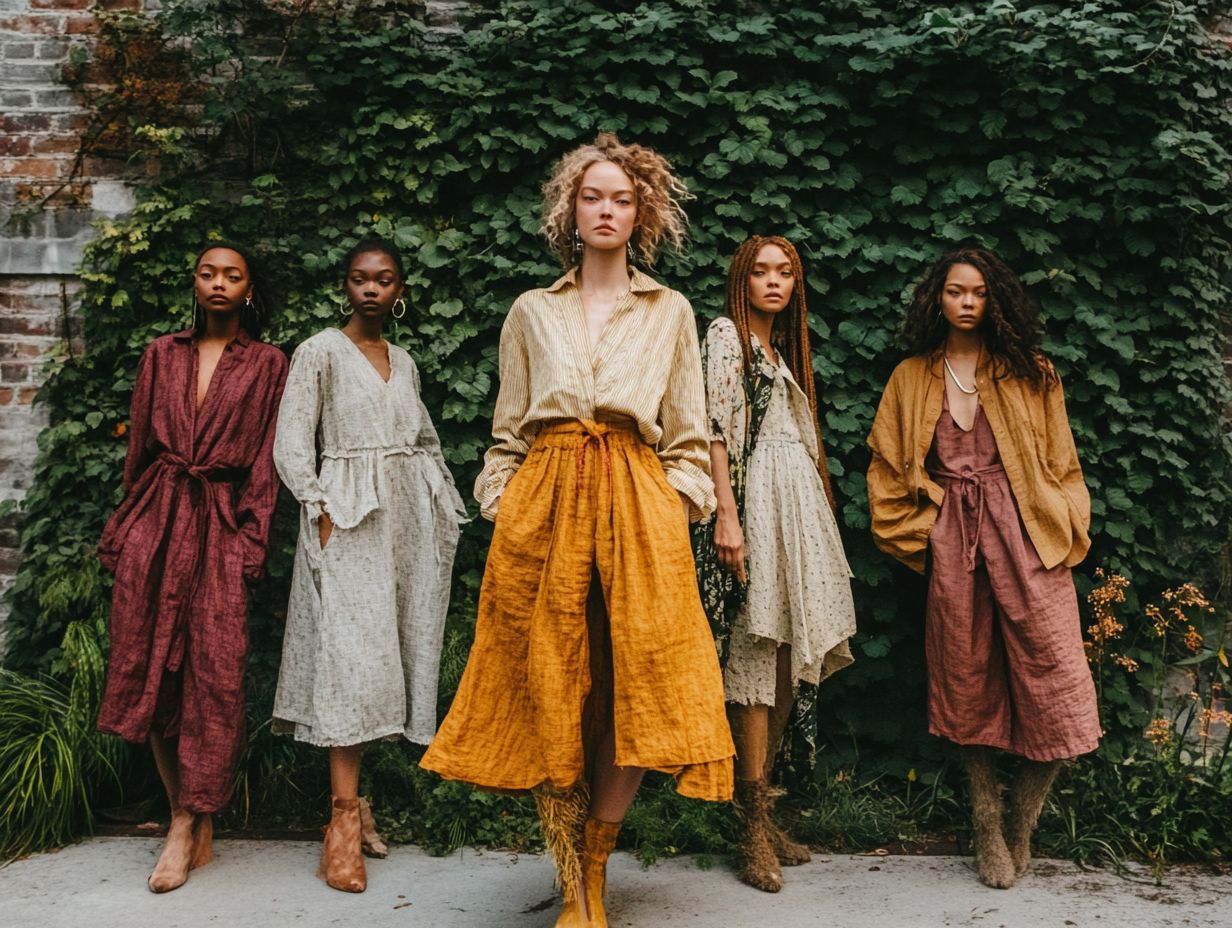
Dressing up sustainable fabrics for formal occasions is within reach when you employ the right styling techniques that emphasize elegance while remaining committed to eco-friendly principles.
With options like organic cotton, Tencel, or recycled polyester, you can cultivate a polished look that blends style with sustainability. To further your efforts, consider exploring 5 ways to make your wardrobe more sustainable. Imagine a beautifully tailored dress or sharp suit crafted from these materials, paired with thoughtfully chosen accessories to enhance your overall aesthetic.
Opt for statement jewelry made from reclaimed metals or a handbag fashioned from upcycled materials. Each focal point not only enhances your outfit but narrates a tale of conscious consumerism.
Select footwear constructed from biodegradable materials or vegan leather to complete your ensemble, embodying sustainability without sacrificing sophistication.
Creative Ways to Mix and Match Sustainable Fabrics
Exploring creative ways to mix and match sustainable fabrics can elevate your style while promoting eco-friendly clothing choices aligned with the latest fashion trends.
By integrating pieces crafted from organic cotton, linen, or Tencel, you can assemble outfits that exude elegance while contributing to a healthier planet. Pair a flowy Tencel maxi dress with a chic denim jacket made from recycled fibers for the perfect blend of casual and sophisticated.
Mixing textures, like a structured hemp blazer with soft bamboo trousers, adds visual intrigue and showcases each fabric’s unique qualities.
This approach highlights versatility and encourages bold experimentation in your wardrobe while embracing sustainable practices.
Explore sustainable fabrics in your wardrobe today and make a positive impact on both your style and the environment!
How Can Sustainable Fabrics Be Styled for a Casual Look?
Sustainable fabrics offer you the perfect opportunity to achieve a casual look without sacrificing comfort or quality in your eco-friendly clothing choices.
To maximize the versatility of these materials, think about weaving them into your everyday wardrobe staples, such as t-shirts, joggers, or casual dresses. Fabrics like organic cotton, hemp, and Tencel not only feel wonderfully soft against your skin but are also remarkably durable. For a more eco-friendly approach, consider the sustainable fabrics for your capsule wardrobe as they stand up beautifully to frequent wear.
Choosing thoughtfully designed items enhances their longevity. Pair that with proper clothing care washing in cold water, air drying, and storing your textiles with care and you can significantly extend their lifespan. By adopting these practices, you can keep your sustainable garments looking fresh while embracing a more conscious approach to fashion.
What Are Some Common Misconceptions about Sustainable Fashion?
Despite its rising popularity, sustainable fashion often finds itself shrouded in misconceptions that may hinder your journey toward embracing eco-friendly clothing and making responsible choices.
You might think sustainable fashion is all about basic, uninspired designs, but that couldn’t be further from the truth! There’s a wealth of diverse and creative styles that align with eco-friendly principles, waiting for you to discover. Check out these 5 tips for a sustainable fashion shopping trip to enhance your experience.
Perhaps you believe that choosing these garments means breaking the bank, overlooking the long-term savings that come from investing in quality pieces designed to last. In reality, sustainable fashion includes not just the materials used, but also the ethical treatment of the workers involved in the production process.
By prioritizing clothing ethics, you can shift your perspective, recognizing that choosing sustainability not only supports the planet but also champions fair labor practices, helping create a fairer industry.
Frequently Asked Questions
1. What are some stylish ways to wear sustainable fabrics?
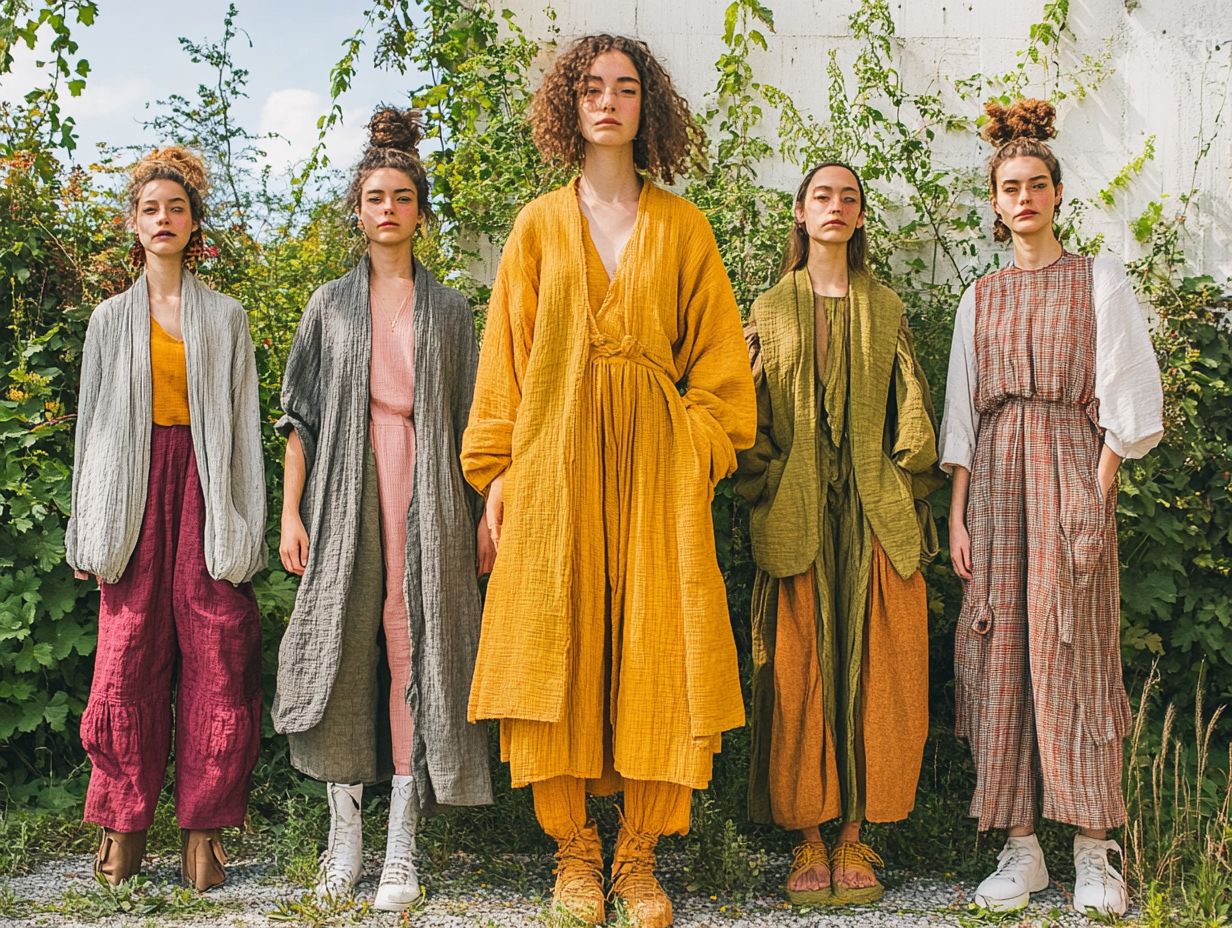
Get creative! Here are stylish ways to rock sustainable fabrics in your outfit: Incorporate them into your daily outfits, mix and match with other pieces, and accessorize with sustainable accessories.
2. How can I make my wardrobe more sustainable?
You can make your wardrobe more sustainable by choosing fabrics made from organic or recycled materials, supporting ethical and eco-friendly fashion brands, and investing in high-quality, timeless pieces instead of fast fashion trends.
3. Can I still be fashionable while wearing sustainable fabrics?
Absolutely! Sustainable fabrics come in a variety of styles and can be just as fashionable as traditional fabrics. Experiment and express your style with different ways to wear them!
4. What are some examples of sustainable fabrics?
Some examples of sustainable fabrics include organic cotton, bamboo, hemp, Tencel, and recycled polyester. These materials are environmentally friendly and have a lower impact on the planet compared to traditional fabrics like polyester or nylon.
5. How can I style sustainable fabrics for special occasions?
You can style sustainable fabrics for special occasions by choosing elegant and luxurious sustainable options like silk, linen, or cashmere, and pairing them with statement accessories or dressier pieces.
6. Are there any benefits to wearing sustainable fabrics?
Yes, there are many benefits to wearing sustainable fabrics! Not only are they better for the environment, but they are often more durable and higher quality, meaning they will last longer and save you money in the long run. They also support ethical and fair trade practices, ensuring that garment workers are treated fairly and paid a fair wage.
7. Is sustainable fashion more expensive?
Many people worry that sustainable fashion comes with a high price tag. While some items may cost more upfront, investing in quality pieces means you’ll save money over time as they last longer and reduce the need for frequent replacements. Join the movement for a better planet!






